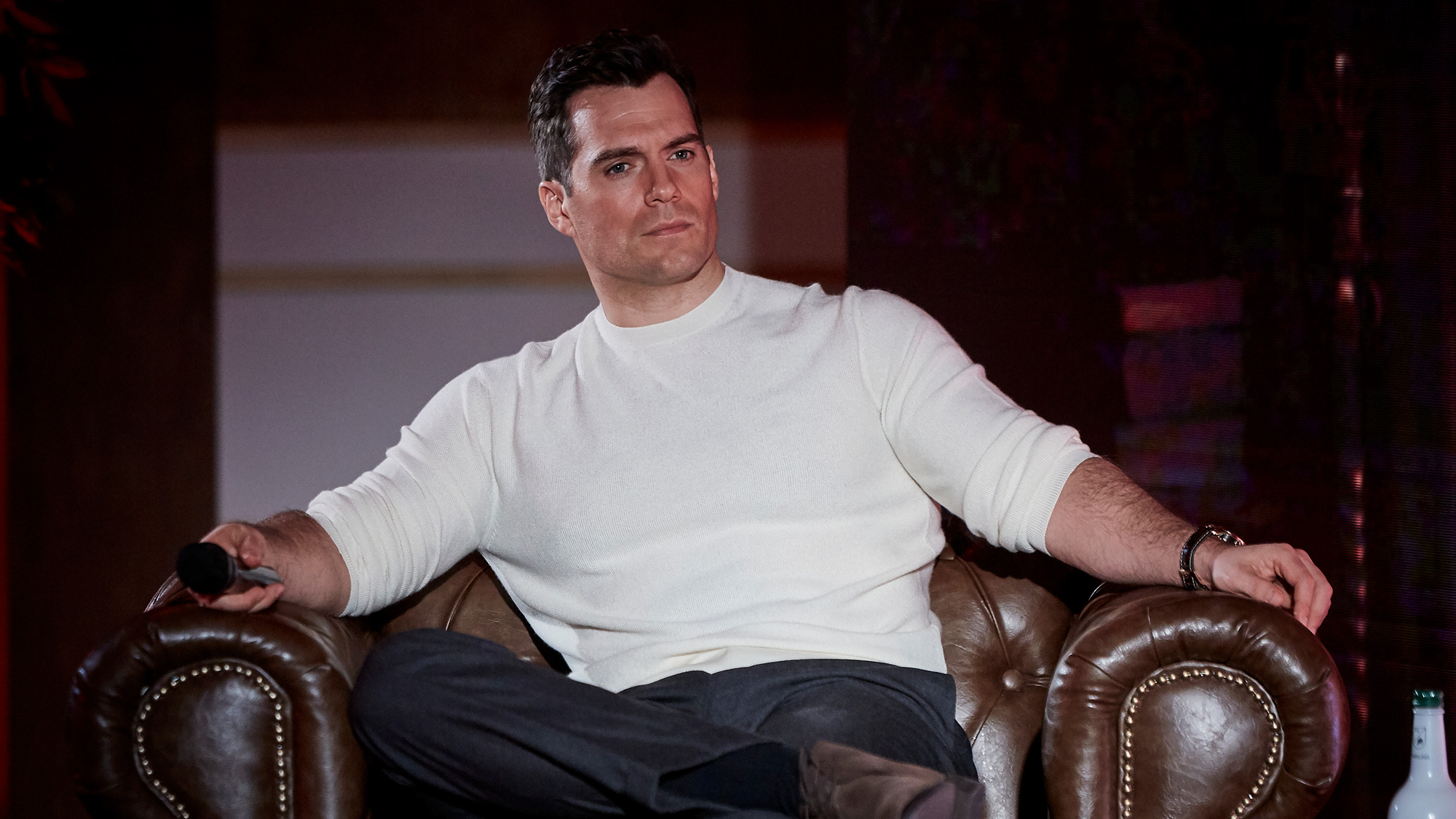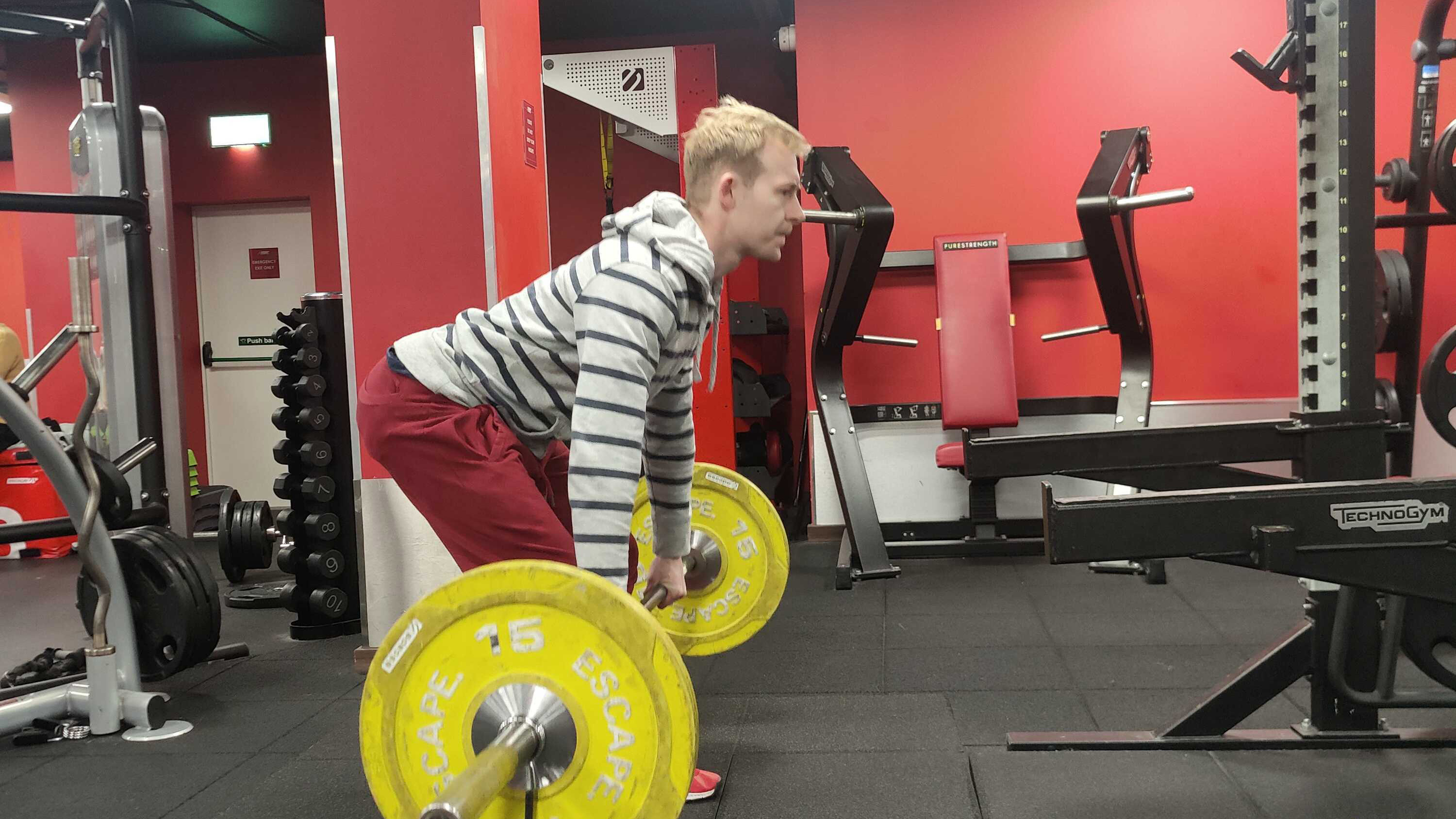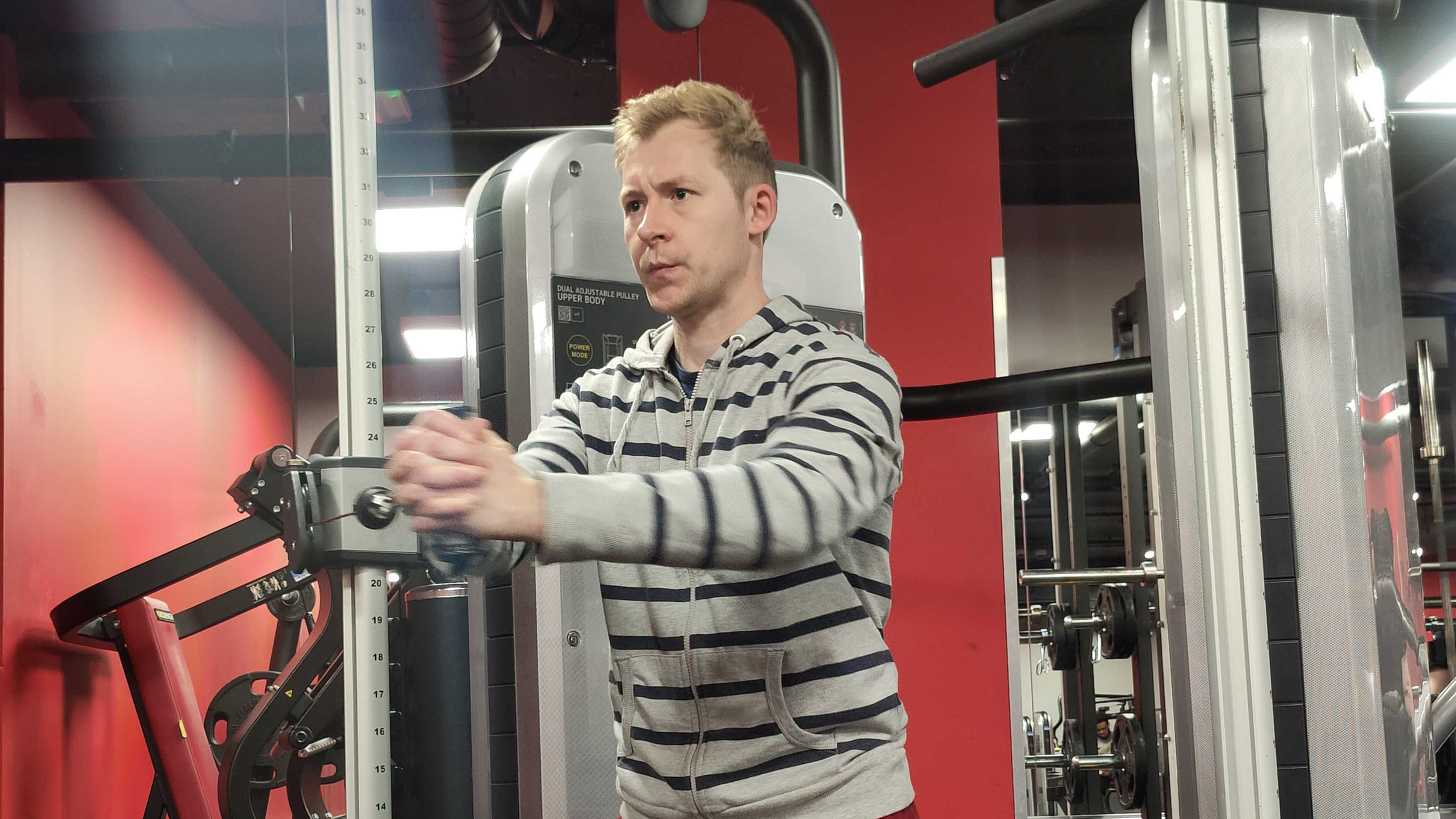I tried Henry Cavill’s Witcher training moves, and here’s what happened
What our fitness writer learned by lifting weights like Henry Cavill's Witcher training for a day


You've probably heard of Henry Cavill. He's best known as the man who plays Superman and Geralt of Rivia in Netflix's popular fantasy series, The Witcher, and for 10 years he has been required to maintain a Clark Kent-worthy physique.
When not running, Cavill trains using weights such as the best adjustable dumbbells, barbells and the best kettlebell. Of course, it needs to be noted that Cavill presumably gets access to the best chefs, nutritionists, personal trainers, facilities and other assistance in the run-up to filming. However, when it comes to working out, Cavill has always been forthright about his training in interviews, shying away from most "fad" workouts and opting for conventional big lifts like squats, overhead presses, and deadlifts.
In the video below, Cavill, along with trainer Dave Rienzi, talk about the training he underwent to prepare for The Witcher. Naturally, I was curious about what makes a superhero physique like Cavill's – so I took to the gym and tried a few of these movements myself.
Watch: Henry Cavill's Witcher training
The moves
"The key foundation movement we incorporate is the Romanian deadlift, to strengthen the posterior chain", says Rienzi. "He's doing a four-second negative with this, then a two-second pause at the bottom. The whole key here is maximizing time-under-tension, so he can fatigue the muscles but not overstress his nervous system." Cavill also uses one of the best resistance bands around his thighs to really engage those glutes.
Cavill also uses back hyper-extensions to isolate the muscles in his glutes and lower back, to further support the posterior chain. These help Cavill do "pirouettes with swords, anything which is based upon one-leg movements when a knee can have a bad injury when you don't have the glute medialis engaged."
Next up is an oblique static hold with a cable machine in the gym, a move I had never seen before. "He's extending his arms and holding his core tight, to activate the transverse abdominals and the obliques at the same time," says Rienzi.
"He's also keeping his glutes engaged. By extending his arm out and back in, he's making the move even more challenging."
Start your week with achievable workout ideas, health tips and wellbeing advice in your inbox.
The three-way shoulder raise is next, to target individual parts of your deltoids, or shoulder muscles. This is all about muscular endurance, to maintain control during long days of shooting swordfights.
Finally, it's onto bicep curls, and Cavill is isolating his biceps and forearms by holding both dumbbells in a contracted position and extending one at a time.
"What this really helps with is my forearms," says Cavill, "that constant time under pressure. When you're into Take 16 of the day with complex wrist movements, your forearm does start to die, and you'll end up throwing swords across the room. It makes a big difference to have that muscular endurance in your forearm specifically."
The training

So although I'm trying these moves in quick succession, it's worth noting that Cavill says, "this is not a workout in particular. These are just moves we put into workouts depending on which muscle groups we are working for that particular day.
"It's important to remember that you are you. Everyone has a different genetic makeup, everyone is at a different stage of fitness, and everyone has a different amount of calories going in. So you do you, just make sure each workout is the hardest that you can do it. Don't look at the person next to you."
With that in mind, I wasn't going into the gym expecting to transform into superhero shape. However, I was interested in Cavill's training principles, as someone who is obviously very fit, knows their stuff, and seems focused on simple training principles that work rather than promoting "fad" workouts to get Hollywood ripped in weeks.
With almost all these moves, Cavill's focus on form, core strength and time under tension meant I had to take the weight down a notch. I'm used to doing conventional deadlifts at around 200lbs, but the emphasis on doing Romanian deadlifts with a slow, four-second eccentric phase meant this would not fly. I had to take my ego out of the equation and lower the weight to around 110lbs to complete three sets of six reps in good form.

Likewise with the oblique holds. My core was fighting me as the cable machine continued to exert that pressure to pull me off course. I don't normally train many moves that involve isolating my core, and consequently, my obliques and abs felt very weak by the end of the second set. This is definitely a move I could incorporate into my own training regime, although I had the sneaking feeling a bicycle crunch would do a similar job.
Amazingly, the shoulder raises and bicep curls were the toughest of the lot. Even using smaller 9lbs dumbbells, doing three different shoulder raises as a single rep, for 10 reps, meant I was doing essentially 30 repetitions of the same exercise, just hitting slightly different angles. It was agony. I understand why Cavill has heroic shoulders now: in the video, he was using 20lbs dumbbells, more than double my weight, and doing the exercise with relative ease.
The bicep curls did something similar to my forearms, setting them alight with the stress. Time under tension is definitely a valid training principle: research published in the Journal of Physiology found "leg extension exercise at 30% of the best effort (which is a load that is comparatively light), with a slow lifting movement (six seconds up and six seconds down) performed to fatigue produces greater increases in rates of muscle protein synthesis than the same movement performed rapidly (one second up and one second down)".
After training like Henry Cavill for the day, I had learned a valuable lesson. Lift less, slowly, focusing on the correct form, to see results.
Of course, you'll need plenty of protein to fuel all this muscle development, whether that's through whole foods or additional supplements. For the latter, we can recommend our best protein powder for weight loss entries.
Matt Evans is an experienced health and fitness journalist and is currently Fitness and Wellbeing Editor at TechRadar, covering all things exercise and nutrition on Fit&Well's tech-focused sister site. Matt originally discovered exercise through martial arts: he holds a black belt in Karate and remains a keen runner, gym-goer, and infrequent yogi. His top fitness tip? Stretch.
